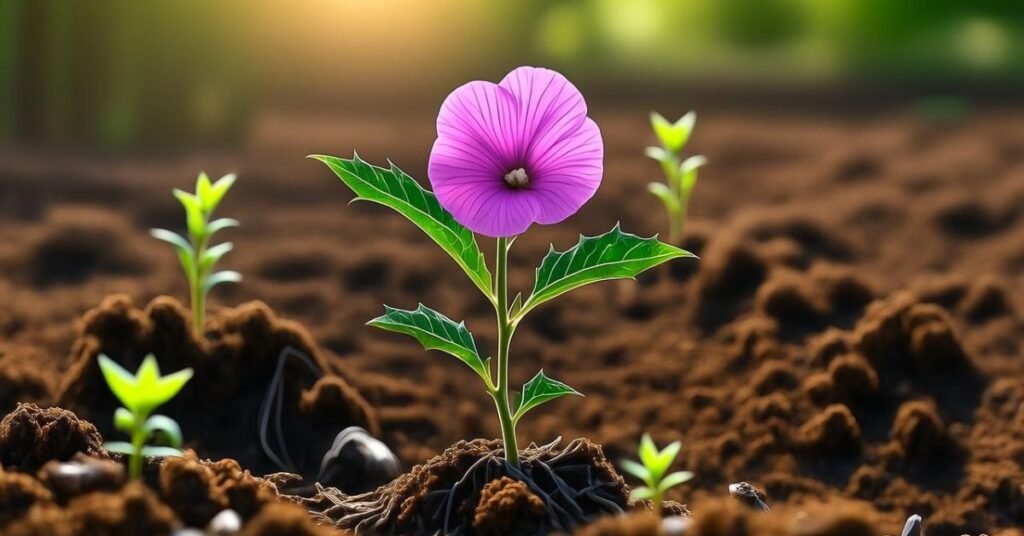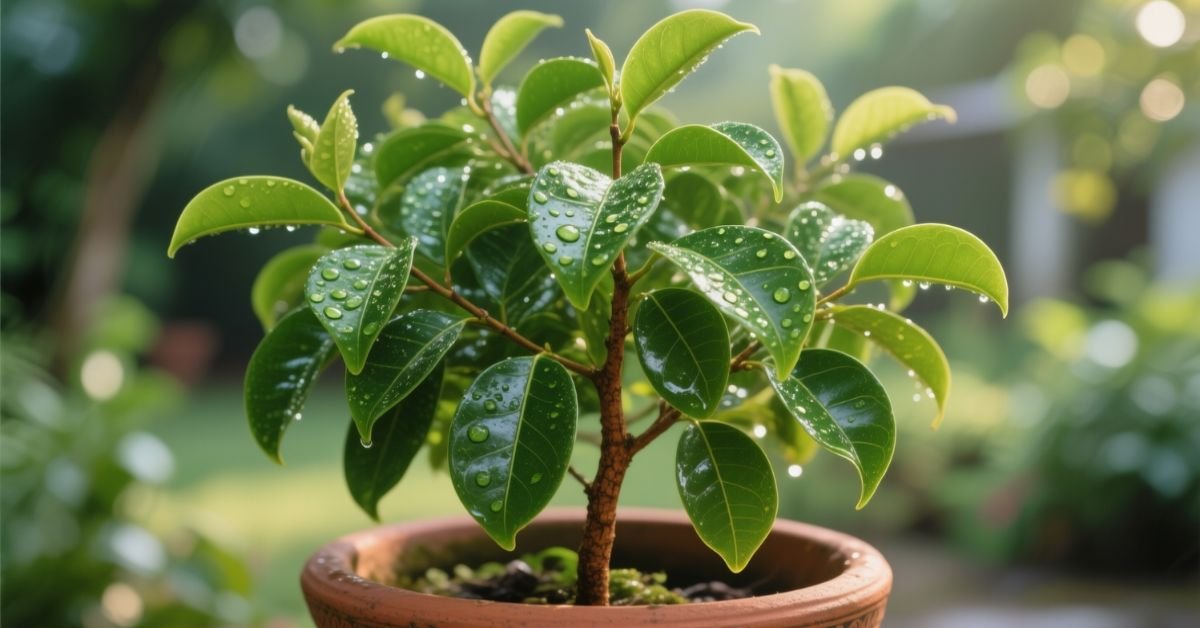Introduction
The curry leaves plant is a small, aromatic herb that belongs to the citrus family. It is commonly grown in tropical and subtropical regions. Its fresh leaves are used in cooking to add flavor and aroma to dishes. The plant is easy to grow in pots or gardens with the right care.
If you love gardening, the curry leaves plant is a great choice. It not only adds greenery to your space but also provides fresh leaves for daily use. With simple care, it can thrive for many years and give you a constant supply of flavorful leaves.
This guide will help you understand how to grow and care for the curry leaves plant. You will learn about soil, watering, sunlight, and pruning tips. With the right steps, your plant will stay healthy and productive.
How to Grow a Curry Leaf Plant
To grow a curry leaf plant, choose a sunny spot with well drained soil. The plant loves warm weather and direct sunlight. Keep the soil moist, but don’t let it get too wet.
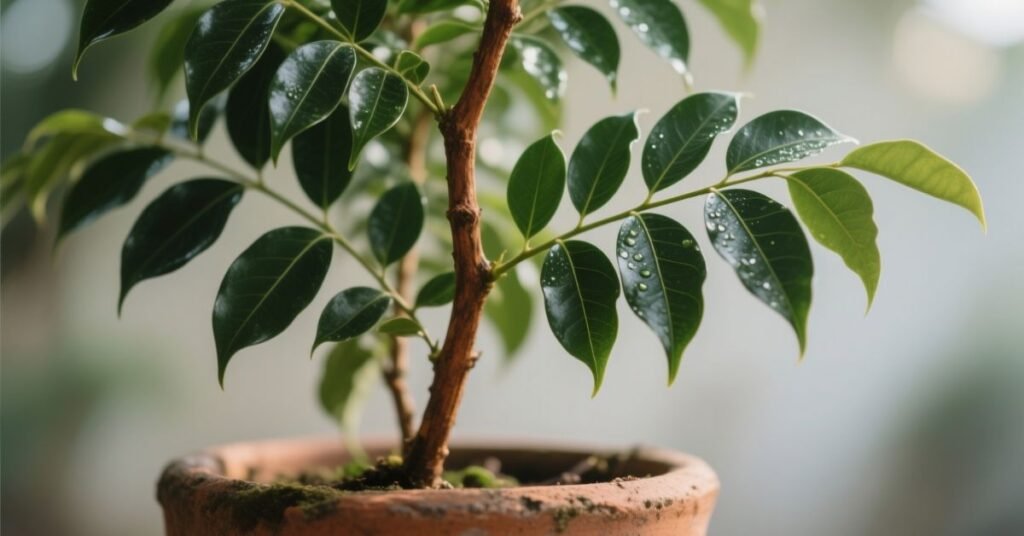
Plants can be started from seeds or cuttings. Seeds take time, while cuttings grow faster. Use organic compost to boost growth and keep the soil rich. With proper care, the curry leaf plant will grow strong and give you fresh leaves for cooking.
Propagating Curry Tree
Propagating a curry tree can be done by seeds or cuttings. Seeds should be fresh for better germination. Plant them in moist, well drained soil and keep them in a warm spot. Cuttings are a faster method. Choose healthy stems and plant them in soil with compost.You should keep the soil moist until the roots begin to grow. With patience and care, the curry tree will grow into a healthy plant.
Pruning a Curry Leaf Plant
Pruning a curry leaf plant helps it grow bushier and healthier. Cut off weak or dried branches to improve airflow. Make sure the top leaves are trimmed to encourage side shoots. For pruning, make sure the scissors are clean and sharp. Do this in spring or summer when the plant is actively growing. Regular pruning will give you more fresh leaves and a stronger plant.
Beautiful Curry Leaf Tree
The curry leaf tree is not only useful but also beautiful.Gardeners and balcony dwellers alike will enjoy its glossy green leaves.There is a graceful shape to the plant as it grows tall. It gives freshness, fragrance, and health benefits. With proper care, it becomes a lovely centerpiece in your garden.
| Feature | Description |
| Appearance | Glossy green leaves, slender branches |
| Height | Can grow up to 6 to 15 feet |
| Fragrance | Strong, aromatic smell |
| Uses | Cooking, medicine, decoration |
| Care Needs | Sunlight, water, pruning, compost |
Light and Soil
The curry leaf plant loves bright sunlight. It grows best in full sun for at least six hours a day. Without enough light, the leaves turn pale and weak.In addition to being well drained, the soil should also be rich in organic matter.Loamy or sandy soil is best for strong and healthy growth. Adding compost keeps the soil fertile and helps the plant stay strong.
Temperature and Humidity
The curry leaf plant grows well in warm climates. It prefers temperatures between 65°F and 90°F. Cold weather can damage the plant, especially frost. Keeping it in a sunny, sheltered spot helps it stay healthy.
- Warm weather supports faster growth.
- Protect the plant from frost and chilly winds.
- Moderate to high humidity keeps the leaves fresh.
- In dry air, misting the plant helps maintain moisture.
- Indoor growing is best during cold seasons.
Watering a Curry Leaf Plant
Watering a curry leaf plant requires balance. The soil must stay moist but never soggy. Too much water can cause root rot. Too little water makes the leaves dry and weak. Always check the soil before adding water.
In summer, the plant needs frequent watering. In winter, reduce the amount to avoid soggy soil.Choose pots with drainage holes to avoid excess water. Consistent and careful watering will keep the plant green and healthy.
Fertilizer
The curry leaf plant thrives when given the right fertilizer. Use organic compost or homemade kitchen waste fertilizer for best results. Apply fertilizer once a month in the growing season. Avoid chemical fertilizers as they can harm the plant. Adding cow dung or buttermilk solution also helps boost leaf growth. Regular feeding keeps the plant healthy and productive.
Types of Curry Trees
There are different types of curry trees grown around the world. Each type has unique leaves, flavors, and growth patterns. Some are common in home gardens, while others are rare. Knowing the types helps you choose the best one for your needs.
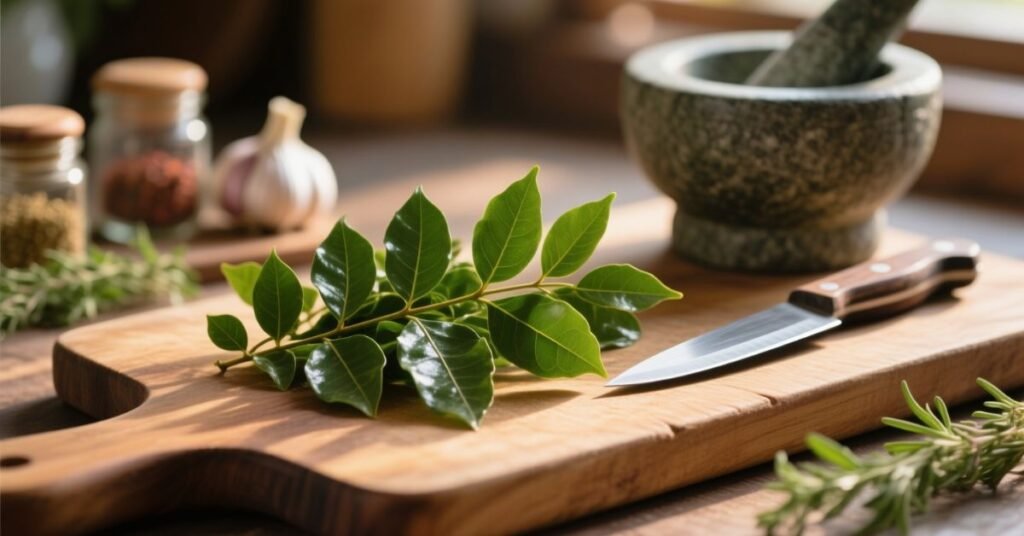
The three main types are regular curry leaf, dwarf curry leaf, and Gamthi curry leaf. The regular type grows tall and is widely used in cooking. The dwarf type is smaller and easy to grow in pots.The Gamthi variety grows slowly but offers the richest aroma and flavor.
| Type | Growth Pattern | Features | Best Use |
| Regular Curry | Tall, fast growing | Common variety, medium aroma | Everyday cooking |
| Dwarf Curry | Compact, bushy | Easy to grow in pots, mild taste | Home gardening |
| Gamthi Curry | Slow growing, hardy | Strong aroma, thick leaves | Special dishes, flavor |
Planting Curry Leaf Plant from Seeds
Planting a curry leaf plant from seeds takes patience. Always use fresh seeds for better germination. Remove the outer shell before planting. Place the seeds in well drained soil with compost. Keep the soil moist but not soggy. Keep the pot in a sunny and warm location. Seeds may take a few weeks to sprout. With proper care, the small seedlings will develop into healthy plants.
Harvest and Use
You can harvest curry leaves once the plant reaches maturity. Always pick fresh leaves gently to avoid damaging stems. Harvesting from the top helps the plant grow bushier. Avoid removing too many leaves at one time.
- Fresh leaves give strong flavor in cooking.
- Commonly used in curries, rice, and chutneys.
- Can be dried and stored for months.
- Provide health benefits when used regularly.
- Regular harvesting encourages new leaf growth.
Problems with Curry Tree
The curry tree is easy to grow but may face some problems. Yellow leaves often appear due to overwatering or poor soil drainage. Slow growth can happen when the plant does not get enough sunlight or nutrients. Pests like aphids and spider mites may attack the leaves.
Proper care can prevent most issues. Use well draining soil and water the plant only when necessary. Give the plant plenty of sunlight and organic fertilizer. Regularly check for pests and treat them naturally. With attention, the curry tree will stay healthy and strong.
| Problem | Cause | Solution |
| Yellow Leaves | Overwatering, poor drainage | Reduce water, improve soil |
| Slow Growth | Lack of sunlight, poor soil | Place in sun, add compost |
| Pest Attacks | Aphids, spider mites | Use neem oil or natural sprays |
| Leaf Drop | Cold weather, stress | Keep warm, avoid sudden changes |
| Weak Aroma | Poor nutrition | Apply organic fertilizer monthly |
Top Tips for Curry Leaf Tree
The curry leaf tree grows best with simple but regular care. It needs sunlight, water, and good soil to thrive. Pruning and feeding keep it healthy and strong. A little effort gives you fresh leaves all year.
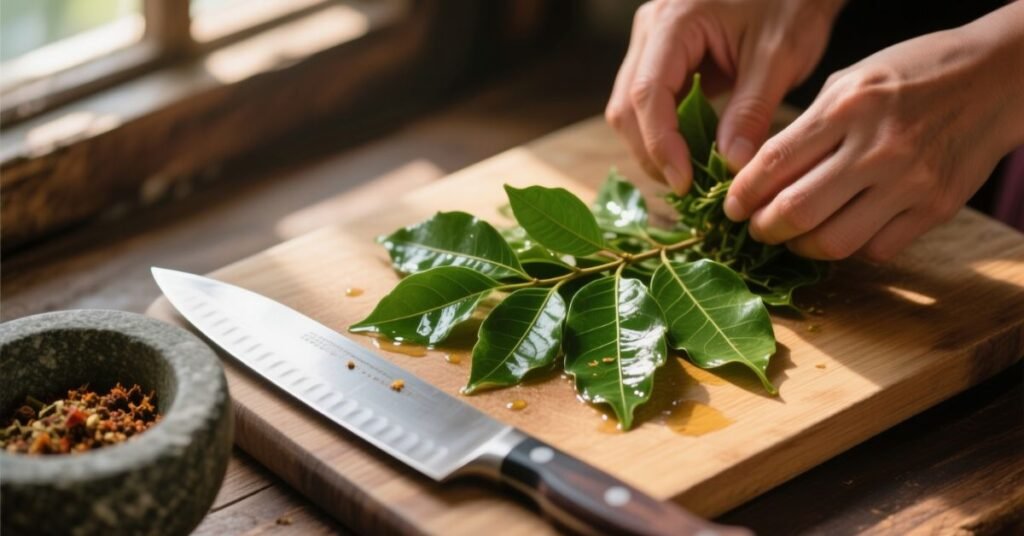
- Place the plant in full sunlight for at least 6 hours.
- Water regularly but avoid soggy soil.
- Use organic compost or fertilizer monthly.
- Prune the top branches to encourage side growth.
- Protect the plant from frost and cold winds.
- Harvest leaves gently to support new growth.
Conclusion
The curry leaf plant is a simple yet valuable addition to any garden. With proper care, it grows healthy and provides fresh, aromatic leaves for daily use. From cooking to health benefits, this plant offers many advantages. Regular watering, sunlight, and organic feeding keep it thriving. Growing a curry leaf plant is easy and rewarding for every home gardener.
FAQs
Q1: How long does it take for a curry leaf plant to grow from seeds?
It can take 2 to 4 weeks for seeds to sprout, and a few months to develop into a strong plant.
Q2: Can I grow a curry leaf plant indoors?
Yes, you can grow it indoors if it gets enough sunlight or under a grow light.
Q3: How often should I fertilize my curry leaf plant?
Fertilize once a month during the growing season with organic compost or liquid fertilizer.
Q4: Why are the leaves of my curry plant turning yellow?
Yellow leaves usually happen due to overwatering, poor drainage, or lack of nutrients.
Q5: When can I start harvesting curry leaves?
You can start harvesting once the plant is about 1 to 2 years old and has grown enough branches.

